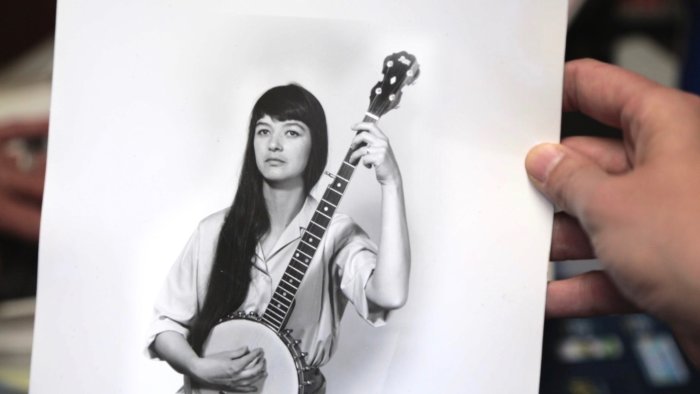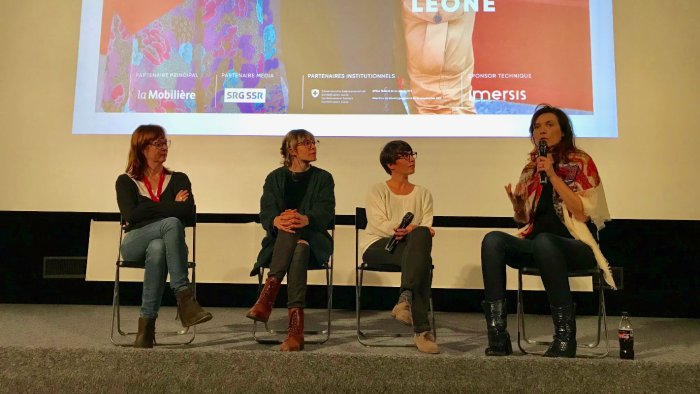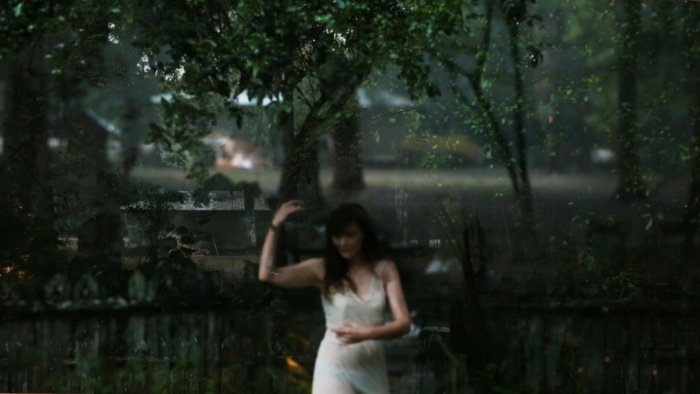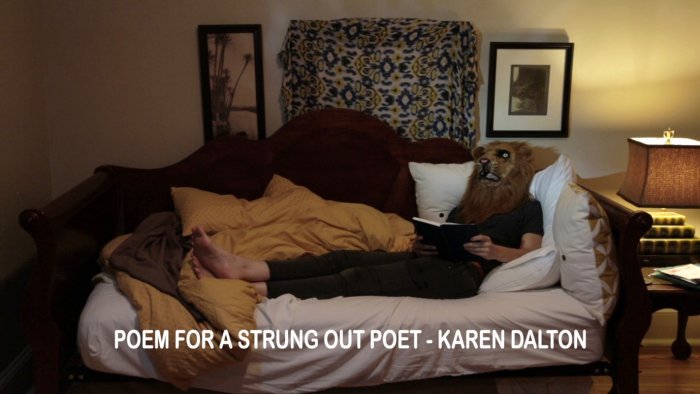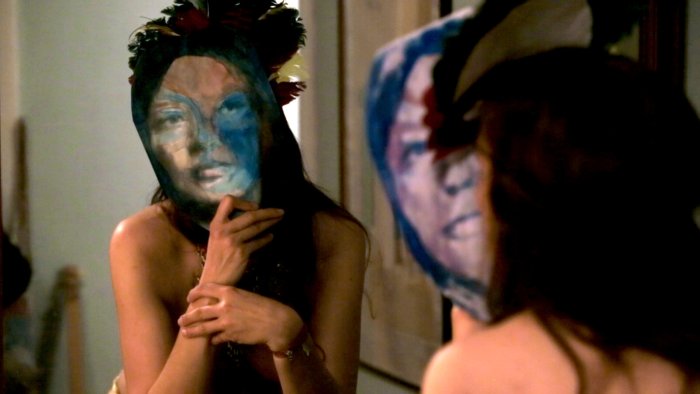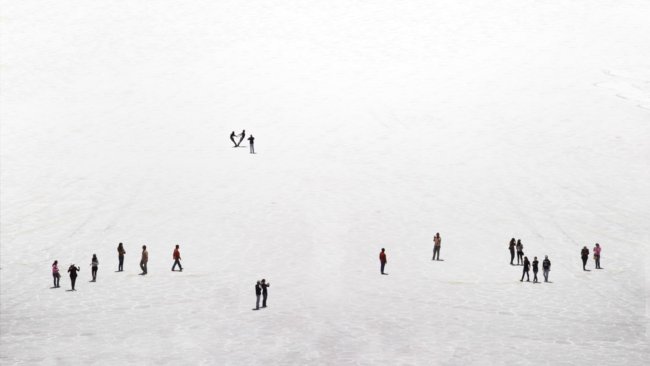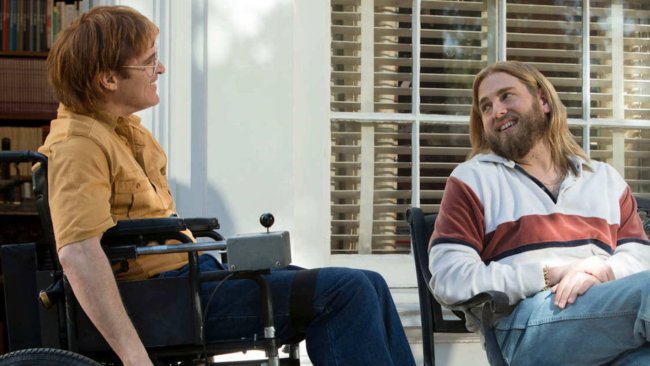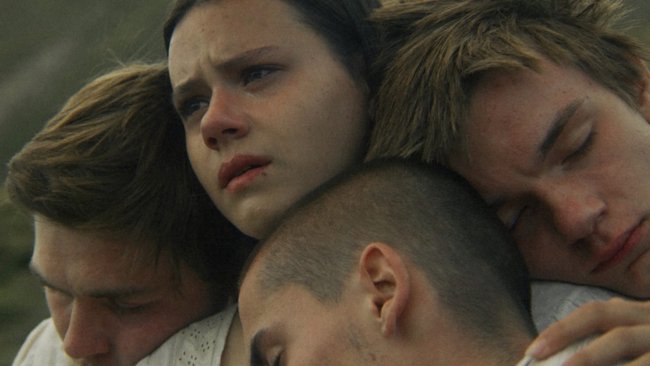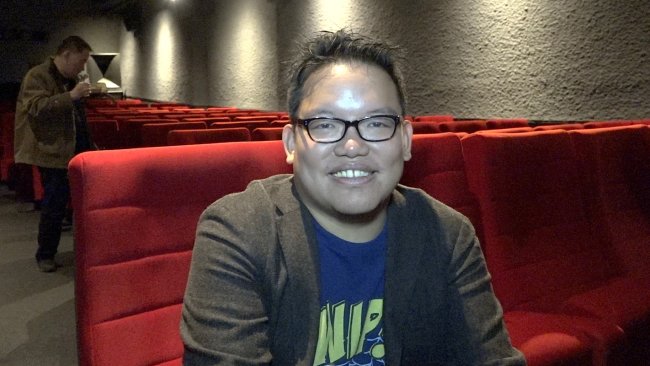A Bright Light - Karen and the Process
[…] Crossing the US to see the places where Dalton lived, made music and eventually passed away, Antille insists that «on this trip we seek not her ghost, but to call her back to us». With this “calling” we are sentimentally wooed to not only Dalton’s musical talent, but to the woman herself, recreated for us through testimonials of the people she played music with and the transparency of Antille’s creative process.
[…] «A Bright Light» is no prosaic attempt to present a biography of Dalton’s life. While we learn something of her musical career and hear testimonies correcting some false information in circulation, there is an intentional blurring between the world of the documenter and Dalton’s.
Filmexplorer had the chance to record (AUDIO here below) the interesting Q&A with Emmanuelle Antille at the premiere of «A Bright Light» at Visions du réel 2018 in Nyon.
Text: Jodie McNeilly | Audio/Video: Ruth Baettig
The film A Bright Light – Karen and the Process by artist and filmmaker Emmanuelle Antille kicks off the first of several interviews with musician Billy Mitchell, an acquaintance of folk-blues singer Karen Dalton (the subject of the film) during her time in Greenwich Village. Mitchell asks the question: «Where does creativity come from?», and answers: «You free associate according to how you feel at the moment and what images go together». His thesis on the creative process speaks directly to the approach by Antille and her on-tour collaborators (Carmen Jaquier, Malika Pelliciolo) in their reconstruction of the life and artistry of Dalton. Crossing the US to see the places where Dalton lived, made music and eventually passed away, Antille insists that «on this trip we seek not her ghost, but to call her back to us». With this “calling” we are sentimentally wooed to not only Dalton’s musical talent, but to the woman herself, recreated for us through testimonials of the people she played music with and the transparency of Antille’s creative process.
From Summerville Colorado to New York, with a whole lot of other country towns and cities in between, the cameras (HDV and Super 8) move us from roadside motels to the homes of friends and collaborators of Dalton. It is a road trip that sifts through the memories both well remembered and partly forgotten in the haze of heavy drug taking of the 60s and 70s that Dalton herself had spiralled into as part of the process. A necessary path to altered states that freed her creativity. Those who not only hear but listen, sense the darkness and pain. They also see the beauty, brightness and light in the harmonious connection between voice, instrument, word, sound, rhythm, dreams and “something else”. This something else is interpreted differently by those who listened to her then and have only discovered her now.
Dalton’s absence in the film is felt in the few distributed fragments of archive material. A bashful performer who was unable to successfully stage her craft, we are left with some still images and very little footage. Beside the two albums she recorded in 1969 and 1971 (It’s so Hard to Tell Who’s Going to Love You the Best; In My Own Time), chance recordings of her have been posthumously released through the efforts of her friends who recorded her singing during small gigs or jams (Green Rocky Road and Cotton Eyed Joe in 2008, and Karen Dalton, 1966 in 2012). While we are able to listen to the songs of Dalton, there is very little else to provide a more holistic narrative of the person. In the film, the musician is “called to life” through the bodies and voices of the documenters and interviewees: her songs are read as poetry; extracts from her diary exposed in manifesto; her gestures embodied by friends through dance vignettes; and rubble from her miner’s hut in Summerville raised from the weeds and soil of the site are held in the hands like holy relics, the surrounding areas of the cabin filmed from where the windows once stood.
A series of “collections” as process material are offered. A small cardboard effigy is made of the Summerville house that is burnt in a final ritual. Masks of feather and fur are worn, and costumes are sewed in reflective scenes, as Antille and her entourage freely associate with the words of Dalton, impressions of the places and people they encounter, and their own purely artistic investigation that is neither journalistic, nor musically inspired. Theirs and other’s experiences are transformed materially into objects, mostly found, sometimes made. These objects are meditatively constructed from cloth, nature, movement, performance and filmic explorations using video techniques that montage past, present and future in a cornucopia of images sensitive to the artist. Dalton’s life is reimagined and exhibited, never reported upon. At times, I feel privy to a stalker’s obsession.
A Bright Light is no prosaic attempt to present a biography of Dalton’s life. While we learn something of her musical career and hear testimonies correcting some false information in circulation, there is an intentional blurring between the world of the documenter and Dalton’s. On the road, Antille purposely sets her own writing in juxtaposition with Dalton’s poetry; at times it becomes unclear who the film is about. I was often confused by the ongoing presence of Antille and her collaborators who perform witch-like incantations with lines of lyric, or musical notes from a diary entry to conjure the spirit of the deceased singer. Shots are blocked into ornate stills, an album that lends itself more to the playful response of the documenter’s than Dalton.
One could find it narcissistic to inject oneself so expressively into the story and majority of frames as a filler for the subject’s absence, but on reflection I realise that the film, while vivifying and celebrating the life of a great artist, was in fact sensitively exploring the life of women artists more generally. We see this in the discussion and more creative interactions with other female artists who were either friends of Dalton’s, or contemporary musicians reappropriating her work. We do not need to look far to understand the hardships that women in the arts have faced because of male-dominated institutions, the tension and sometimes heartbreak in needing to choose between their children (or even having children) and full devotion to their craft. And all this often fought out within a background of poverty and precarity.
Karen Dalton’s artistry is undeniable, but her life was left inexplicable; she died a lonely, diseased woman in a trailer. But this thoughtful film dedication, along with those who love and promote her legacy, allow the vibration of her voice and spirit to move us eternally; it also shows us that the role of women in the arts has changed for the better.
This article contains a third-party video. If you would like to watch the video, please adjust your settings.
Info
A Bright Light – Karen and the Process | Film | Emmanuelle Antille | CH 2018 | 93’ | Visions du Réel Nyon 2018, Solothurner Filmtage 2019
First published: April 26, 2018
